Growing Cucumbers: Secret Tips that will transform your garden from a humble patch to a cucumber-producing powerhouse! Have you ever dreamt of biting into a crisp, juicy cucumber, freshly picked from your own backyard? I know I have! But let’s be honest, sometimes growing cucumbers can feel like a frustrating mystery. You water, you fertilize, you pray to the garden gods, and yet… meager harvests or, worse, bitter, misshapen fruits.
Cucumbers have a rich history, dating back thousands of years to their origins in India. They’ve been enjoyed by emperors and commoners alike, prized for their refreshing taste and health benefits. But even with centuries of cultivation, achieving cucumber perfection can still feel elusive. That’s why I’m so excited to share these secret tips with you!
In this article, we’re diving deep into the world of growing cucumbers, uncovering the hacks and tricks that seasoned gardeners swear by. Forget struggling with stunted growth, pest infestations, or bland-tasting cucumbers. I’m going to show you how to create the ideal environment for your cucumber plants to thrive, maximizing your yield and ensuring a delicious harvest. Whether you’re a beginner or a seasoned gardener looking to up your cucumber game, these DIY secrets will empower you to grow the best cucumbers you’ve ever tasted. Get ready to impress your friends and family with your gardening prowess!
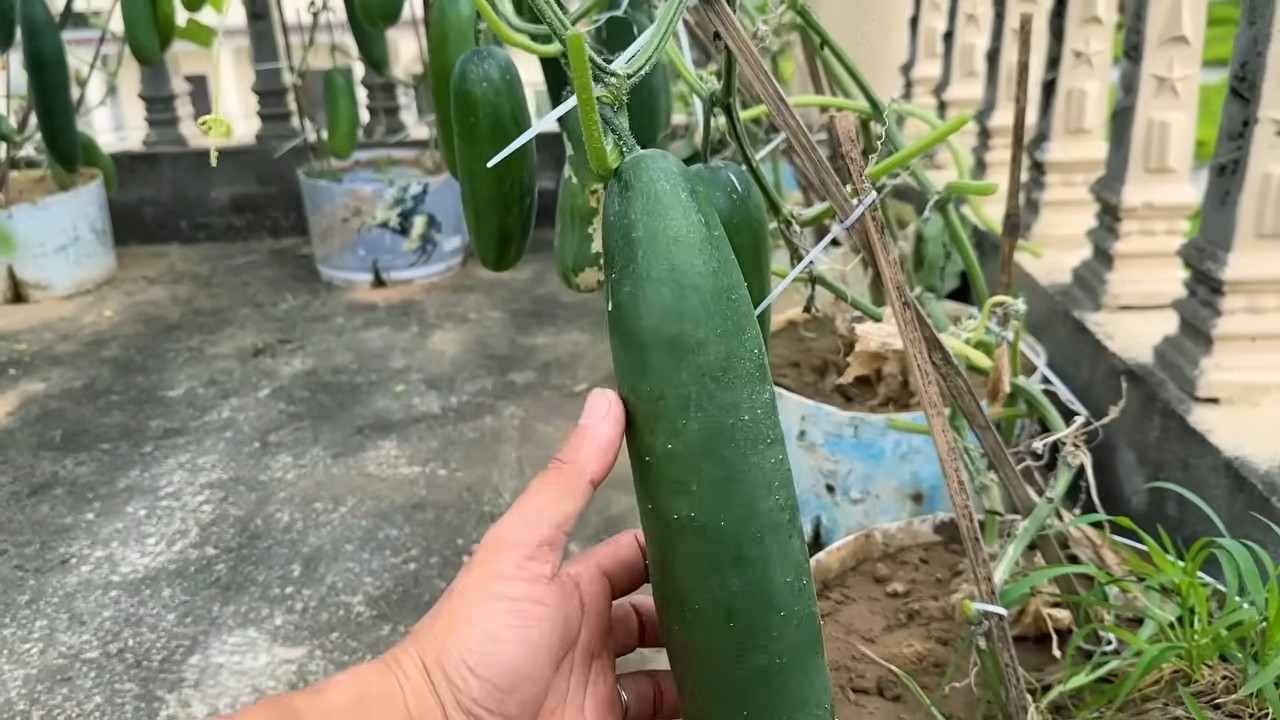
Unlocking Cucumber Abundance: My Secret Tips for a Bumper Harvest
Okay, cucumber lovers, gather ’round! I’m about to spill the beans (or should I say, the seeds?) on how I consistently get a crazy-good cucumber harvest year after year. Forget those sad, wimpy cucumbers you find at the grocery store. We’re talking crisp, juicy, and flavorful cucumbers bursting from your garden! This isn’t just about planting seeds; it’s about understanding what cucumbers crave and giving them exactly that. Get ready to become a cucumber-growing guru!
Choosing the Right Cucumber Variety
Before we even think about soil, let’s talk varieties. Not all cucumbers are created equal, and choosing the right one for your needs and climate is crucial.
* Slicing Cucumbers: These are your classic, long, smooth-skinned cucumbers perfect for salads and sandwiches. Think ‘Marketmore 76’ or ‘Straight Eight’.
* Pickling Cucumbers: Shorter, stubbier, and often with bumpy skin, these are ideal for, you guessed it, pickling! ‘National Pickling’ and ‘Boston Pickling’ are popular choices.
* Burpless Cucumbers: These are bred to have lower levels of cucurbitacin, the compound that can sometimes cause bitterness and, well, burping. ‘Sweet Slice’ and ‘Armenian’ are good options.
* Consider your climate: Some varieties are more heat-tolerant or disease-resistant than others. Do a little research to find what thrives in your area.
Preparing the Perfect Cucumber Bed
Cucumbers are hungry plants! They need rich, well-drained soil to really thrive. Here’s how I prep my cucumber bed:
* Sunlight is Key: Cucumbers need at least 6-8 hours of direct sunlight per day. Choose a sunny spot in your garden.
* Soil Testing (Optional, but Recommended): A soil test will tell you the pH and nutrient levels of your soil. Cucumbers prefer a slightly acidic to neutral pH (6.0-7.0). You can get a soil test kit at most garden centers.
* Amend, Amend, Amend!: This is where the magic happens. I dig in plenty of compost, well-rotted manure, or other organic matter to improve soil fertility and drainage. Aim for a soil that’s loose and crumbly.
* Raised Beds or Mounds: Cucumbers love well-drained soil. If your soil is heavy clay, consider growing them in raised beds or mounds to improve drainage.
Planting Your Cucumber Seeds or Seedlings
Now for the fun part – getting those cucumbers in the ground!
* Timing is Everything: Cucumbers are warm-weather plants and are very sensitive to frost. Wait until the danger of frost has passed and the soil has warmed up to at least 60°F (15°C) before planting.
* Starting Seeds Indoors (Optional): You can start cucumber seeds indoors 3-4 weeks before the last expected frost. Use biodegradable pots to avoid disturbing the roots when transplanting.
* Direct Sowing: This is my preferred method. Sow seeds directly into the prepared soil, about 1 inch deep and 2-3 inches apart. Thin seedlings to 12-18 inches apart once they have a few true leaves.
* Transplanting Seedlings: If you started seeds indoors, harden them off gradually by exposing them to increasing amounts of sunlight and outdoor conditions over a week before transplanting. Plant them at the same depth they were growing in their pots, spacing them 12-18 inches apart.
* Water Thoroughly: After planting, water the seeds or seedlings thoroughly.
Providing Support: Trellising for Success
Cucumbers are natural climbers, and trellising them offers several benefits:
* Improved Air Circulation: Trellising allows for better air circulation around the plants, which helps prevent fungal diseases.
* Increased Sunlight Exposure: Trellised cucumbers get more sunlight, leading to better fruit production.
* Easier Harvesting: It’s much easier to spot and harvest cucumbers when they’re hanging from a trellis.
* Space Saving: Trellising allows you to grow more cucumbers in a smaller space.
Here’s how I set up my cucumber trellis:
* Choose a Trellis: There are many options, including A-frame trellises, vertical trellises, and even tomato cages. Choose one that’s sturdy enough to support the weight of the mature plants and fruit.
* Install the Trellis: Install the trellis before planting the cucumbers to avoid disturbing the roots later.
* Train the Vines: As the cucumber vines grow, gently guide them onto the trellis and tie them loosely with twine or plant ties.
Watering and Feeding Your Cucumber Plants
Consistent watering and feeding are essential for a bountiful cucumber harvest.
* Water Deeply and Regularly: Cucumbers need consistent moisture, especially during hot weather. Water deeply at the base of the plants, avoiding wetting the foliage, which can encourage fungal diseases. Aim for about 1 inch of water per week.
* Mulch, Mulch, Mulch!: Apply a layer of mulch around the plants to help retain moisture, suppress weeds, and regulate soil temperature. Straw, wood chips, or shredded leaves are all good options.
* Fertilize Regularly: Cucumbers are heavy feeders and benefit from regular fertilization. I like to use a balanced organic fertilizer, such as a 5-10-10, every 2-3 weeks. You can also use compost tea or fish emulsion.
* Side-Dress with Compost: In addition to regular fertilization, I also side-dress my cucumber plants with compost every few weeks. This provides a slow-release source of nutrients.
Pest and Disease Control: Keeping Your Cucumbers Healthy
Unfortunately, cucumbers are susceptible to a few pests and diseases. Here’s how I keep them at bay:
* Cucumber Beetles: These pesky beetles can damage foliage and transmit diseases. Handpick them off the plants or use row covers to protect young seedlings. Neem oil can also be effective.
* Squash Bugs: Similar to cucumber beetles, squash bugs can also damage cucumber plants. Handpick them off the plants or use insecticidal soap.
* Powdery Mildew: This fungal disease appears as a white, powdery coating on the leaves. Improve air circulation, avoid overhead watering, and apply a fungicide if necessary.
* Downy Mildew: Another fungal disease that can cause yellow spots on the leaves. Improve air circulation, avoid overhead watering, and apply a fungicide if necessary.
* Prevention is Key: The best way to control pests and diseases is to prevent them in the first place. Choose disease-resistant varieties, practice good sanitation, and monitor your plants regularly.
Harvesting Your Bumper Crop
The moment we’ve all been waiting for – harvesting those delicious cucumbers!
* Harvest Regularly: Cucumbers are most flavorful when they’re harvested at the right size. Check your plants daily and harvest cucumbers when they’re the desired size and color.
* Use a Sharp Knife or Pruners: Cut the cucumbers from the vine with a sharp knife or pruners, leaving a short stem attached.
* Don’t Let Them Get Too Big: Overripe cucumbers can become bitter and seedy.
* Enjoy Your Harvest!: Eat them fresh, pickle them, or share them with friends and neighbors.
My Secret Weapon: Epsom Salts
Okay, here’s my little secret weapon for super-productive cucumber plants: Epsom salts! Epsom salts are magnesium sulfate, and magnesium is essential for chlorophyll production, which is vital for photosynthesis.
* How to Use: Dissolve 1 tablespoon of Epsom salts in 1 gallon of water.
* When to Use: Apply this solution as a foliar spray or soil drench every 2-3 weeks, starting when the plants begin to flower.
* Why it Works: The magnesium in Epsom salts helps the plants produce more chlorophyll, leading to increased photosynthesis and more energy for fruit production. It also helps the plants absorb other nutrients more efficiently.
Troubleshooting Common Cucumber Problems
Even with the best care, you might encounter a few problems along the way. Here are some common issues and how to address them:
* Yellowing Leaves: This could be caused by overwatering, underwatering, nutrient deficiencies, or disease. Check the soil moisture, fertilize if necessary, and look for signs of disease.
* Bitter Cucumbers: This is usually caused by stress, such as inconsistent watering, high temperatures, or nutrient deficiencies. Provide consistent moisture, shade the plants during the hottest part of the day, and fertilize regularly.
* Blossom End Rot: This is caused by a calcium deficiency. Ensure the soil has adequate calcium and water consistently. You can also add crushed eggshells to the soil.
* Poor Fruit Set: This could be caused by
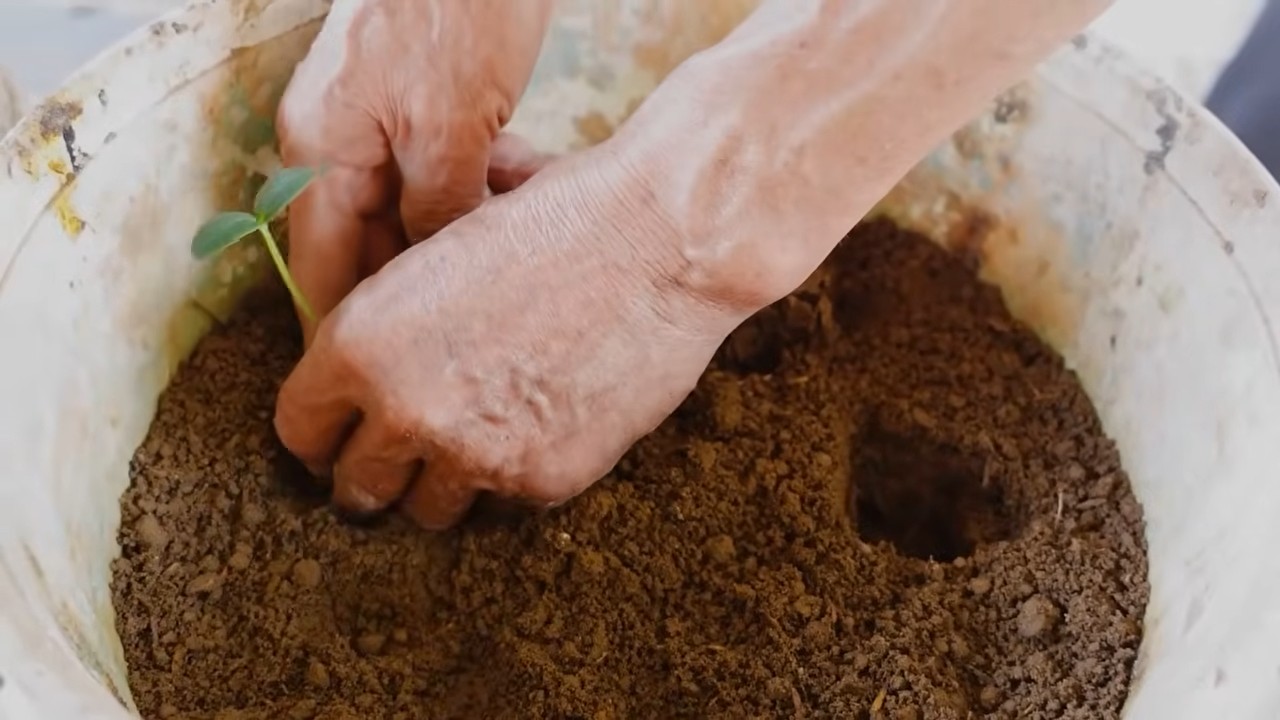
Conclusion
So, there you have it! Unlocking the secrets to abundant cucumber harvests is within your reach. This isn’t just about planting seeds and hoping for the best; it’s about understanding the nuances of cucumber cultivation and employing simple, yet effective, techniques to maximize your yield. We’ve explored the importance of sunlight, soil preparation, proper watering, and crucial support systems. But the real game-changer lies in the **growing cucumbers secret tips** we’ve shared – the ones that elevate your gardening game from amateur to pro.
Why is this a must-try? Because it works! Imagine baskets overflowing with crisp, juicy cucumbers, ready for salads, pickles, or a refreshing snack straight from the vine. No more meager harvests or battling common cucumber ailments. These tips are designed to address the most common challenges faced by cucumber growers, ensuring a healthy and productive plant from seedling to harvest.
Consider these variations to tailor the techniques to your specific needs and environment:
* **Vertical Gardening Adaptation:** If space is limited, adapt the support system to a vertical garden setup. Use trellises or netting attached to walls or fences to maximize vertical space and improve air circulation.
* **Companion Planting Experimentation:** Explore different companion plants beyond marigolds. Basil, dill, and nasturtiums are known to repel pests and attract beneficial insects, further enhancing your cucumber’s health.
* **Watering System Optimization:** If you live in a particularly dry climate, consider using a drip irrigation system to deliver water directly to the roots, minimizing water waste and ensuring consistent moisture levels.
* **Soil Amendment Customization:** Tailor your soil amendments based on your soil’s specific needs. Conduct a soil test to determine nutrient deficiencies and adjust your compost and fertilizer accordingly.
Don’t be intimidated by the details. Start with one or two tips that resonate with you and gradually incorporate others as you gain experience. The key is to be observant, patient, and willing to experiment. Gardening is a journey of learning and discovery, and every season brings new opportunities to refine your techniques.
We are confident that these **growing cucumbers secret tips** will transform your cucumber-growing experience. But the real proof is in the pudding, or rather, in the cucumbers! We wholeheartedly encourage you to put these techniques into practice and witness the difference for yourself.
And most importantly, we want to hear about your experiences! Share your successes, challenges, and any variations you’ve tried in the comments below. Let’s create a community of cucumber enthusiasts, sharing knowledge and supporting each other in our gardening endeavors. Your insights could be invaluable to other gardeners, and together, we can unlock the full potential of our cucumber patches. So, get planting, get growing, and get ready to enjoy a bumper crop of delicious cucumbers!
Frequently Asked Questions (FAQ)
What is the most important factor in growing healthy cucumbers?
While several factors contribute to healthy cucumber growth, consistent watering is arguably the most critical. Cucumbers are water-intensive plants, and inconsistent watering can lead to blossom end rot, stunted growth, and bitter-tasting fruit. Aim for deep, regular watering, especially during hot and dry periods. Mulching around the base of the plants can help retain moisture in the soil.
How often should I fertilize my cucumber plants?
Cucumbers are heavy feeders and benefit from regular fertilization. Start with a balanced fertilizer at planting time, and then side-dress with a nitrogen-rich fertilizer every 2-3 weeks throughout the growing season. Alternatively, you can use a liquid fertilizer diluted according to the package instructions. Avoid over-fertilizing, as this can lead to excessive foliage growth at the expense of fruit production.
Why are my cucumber flowers falling off without producing fruit?
This is a common problem known as blossom drop. Several factors can contribute to blossom drop, including temperature stress (too hot or too cold), insufficient pollination, and nutrient deficiencies. Ensure your plants are receiving adequate sunlight and water, and consider hand-pollinating the flowers if you suspect pollination is an issue. You can also try using a blossom set spray to encourage fruit development.
How do I prevent pests and diseases from attacking my cucumber plants?
Prevention is key when it comes to pests and diseases. Start by choosing disease-resistant varieties and practicing good garden hygiene. Remove any diseased or infested leaves promptly, and avoid overhead watering to prevent fungal diseases. Companion planting with marigolds or other pest-repelling plants can also help. If pests become a problem, consider using organic pest control methods such as insecticidal soap or neem oil.
What are the best companion plants for cucumbers?
Cucumbers benefit from companion planting with several different plants. Marigolds are excellent for repelling nematodes and other soil pests. Dill and basil attract beneficial insects that prey on cucumber pests. Nasturtiums deter aphids and other sap-sucking insects. Avoid planting cucumbers near aromatic herbs like sage or mint, as they can inhibit growth.
How do I know when my cucumbers are ripe and ready to harvest?
The ideal harvest time depends on the variety of cucumber you are growing. Generally, cucumbers are ready to harvest when they are firm, uniformly green, and have reached the desired size for their variety. Overripe cucumbers will turn yellow, become seedy, and develop a bitter taste. Harvest cucumbers regularly to encourage continued fruit production.
Can I grow cucumbers in containers?
Yes, cucumbers can be successfully grown in containers, but it’s important to choose a large container (at least 5 gallons) and provide adequate support for the vines. Use a well-draining potting mix and water regularly. Container-grown cucumbers may require more frequent fertilization than those grown in the ground. Choose bush or compact varieties for container gardening.
What is blossom end rot, and how can I prevent it?
Blossom end rot is a common problem in cucumbers and other vegetables, characterized by a dark, sunken spot on the blossom end of the fruit. It is caused by a calcium deficiency, which is often due to inconsistent watering. Ensure your plants receive consistent moisture, and consider adding calcium to the soil in the form of bone meal or crushed eggshells.
How can I improve pollination in my cucumber patch?
Cucumbers rely on pollinators like bees to transfer pollen from male to female flowers. To attract more pollinators to your garden, plant flowers that provide nectar and pollen, such as sunflowers, zinnias, and lavender. Avoid using pesticides that can harm pollinators. If you suspect pollination is an issue, you can hand-pollinate the flowers by transferring pollen from the male flowers to the female flowers using a small brush.
What are some good cucumber varieties to grow?
There are many different cucumber varieties to choose from, each with its own unique characteristics. Some popular varieties include ‘Spacemaster’ (bush variety), ‘Marketmore 76’ (slicing cucumber), ‘National Pickling’ (pickling cucumber), and ‘Lemon Cucumber’ (round, yellow cucumber). Consider your growing conditions and intended use when selecting cucumber varieties.

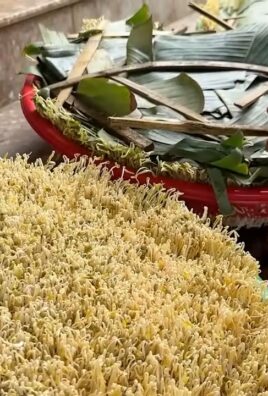
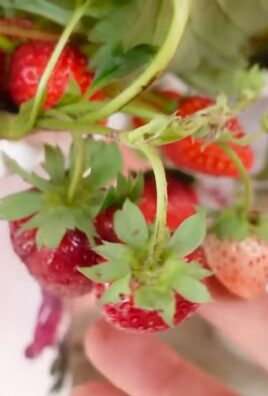
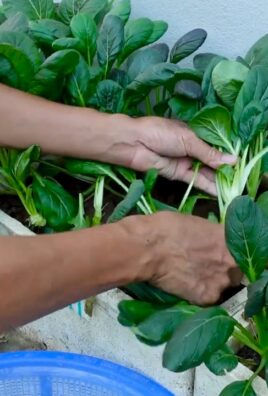
Leave a Comment